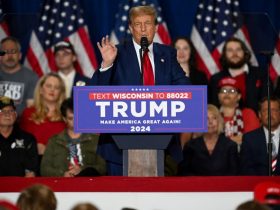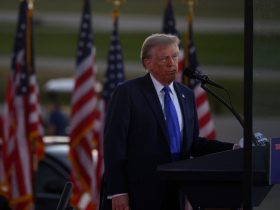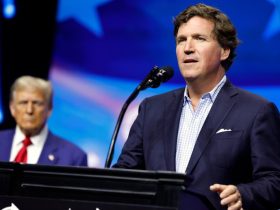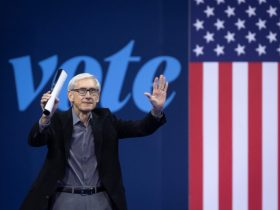At the beginning of August, two of the most important indexes of American stocks — the Dow Jones Industrial Average and the S&P 500 — took a sharp downward turn. On Aug. 5, the Dow closed down more than 2.6 percent; the S&P was down nearly 3 percent.
Donald Trump and his allies jumped on the news. Stock prices have always been one of Trump’s favorite proxies for political performance; when the indexes rose during his presidency, he or his staff often hyped the increases as a reflection of his excellent administration. With similar alacrity, he used the decline as an opportunity to disparage President Joe Biden’s administration — or, really, to attack Vice President Kamala Harris. This was the “Kamala krash,” his supporters crowed, pinning the drop to Trump’s then-newly minted opponent in the upcoming presidential election.
The “krash” was more of a “hikcup,” as it turned out. Three weeks later, the Dow hit a record high. It has added four more since, including one this week. The Kamala klimb, if you will.
In part because Trump isn’t actively talking about the stock markets all the time (as he did until the indexes started to drop in the second year of his presidency), the markets aren’t used as measures of Biden’s administration in the way that they were under Trump. If we do, Trump’s frequent insistence that he’s an exceptional steward of the economy becomes a bit less potent.
On all but 13 days of Biden’s presidency, the Dow and S&P have been higher than the highest point seen under Trump. This is how the indexes generally work: Over time, they usually go up. At this point in Trump’s administration, the Dow had climbed almost 8,100 points and the S&P was up nearly 1,100. Since Biden took office, the Dow is up more than 10,400 points; the S&P is up just under 1,800.
But because the value of each index has climbed, the Biden increases are a smaller percentage of the total market values than were the increases under Trump. The Dow had risen 41 percent by this point of Trump’s presidency, and the S&P was up about 48 percent. Under Biden, the Dow has risen 33 percent; the S&P, 46 percent.
One thing that stands out quite obviously on the charts above is the damage the markets took at the outset of the coronavirus pandemic. It’s a wild card that Trump invokes often. Would prices have been higher had the pandemic never occurred? Did the markets simply rebound to where they would have been anyway? It’s impossible to know. Consider the pandemic a standing asterisk on any comparison between the presidents on this metric.
Oh, and add an asterisk that represents the fact that presidents have little influence over stock prices in the first place, if any. That should cover all the important bases here.
Anyway, another one of the metrics that Trump liked to celebrate was the number of record highs the indexes had achieved. Both presidents saw a number of record highs during their first years in office. There were more during Trump’s third year in office than in Biden’s; there were more during Biden’s fourth year than Trump’s (apply the pandemic asterisk here).
Cumulatively, there were more record highs in both indexes while Trump was president.
But, of course, this is a weird metric. Would investors rather have 30 straight days of the indexes rising one point to set new records or one day in which the market jumped 100 points? It’s safe to assume they’d rather have the latter.
To this point in each presidency, there have been more single-day gains of at least 1 percent during Biden’s administration than there were under Trump. Here, the onset of the pandemic helped Trump; as the economy rebounded, increases in the indexes were consistently bigger.
There’s one more point of comparison worth making: sudden, steep drops in index prices. Here, we can use the “Kamala krash” as our point of reference. How often did the indexes drop to the same extent as they did in early August under each president?
It happened more under Trump.
Lots of Trump tumbles and Donald downturns. He doesn’t mention them much.










